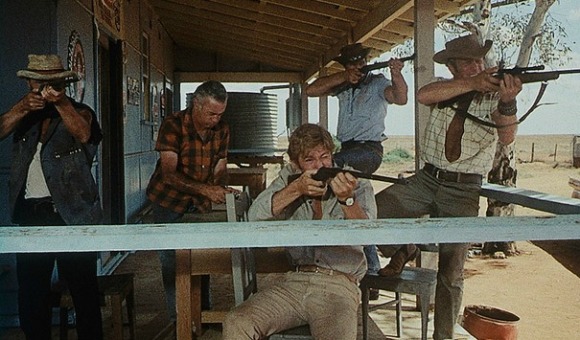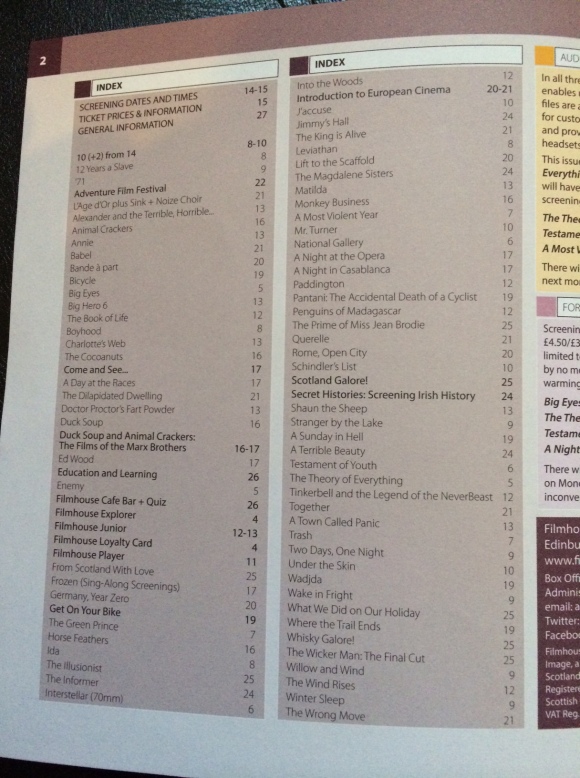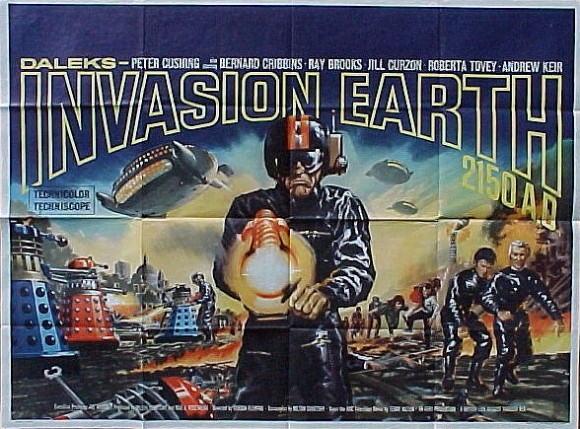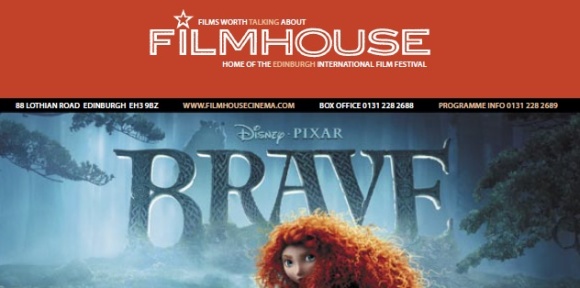
It’s probably a sign of old age that one of the most enjoyable ways for me to spend an hour or so each month is to pick the new Filmhouse programme off the mat, rip open the envelope and to browse the forthcoming films I want to head along to in the coming weeks – the more classics and reissues I can see, the better.

Wake in Fright
In 2014, 1971’s Wake in Fright proved to be my discovery of the year. This hard-going Australian classic stars Gary Bond as John Grant, a straight-laced Sydney teacher working in the outback who takes a detour to the town of Bundanyabba on his way back to the city for Christmas.
Grant enjoys the hospitality of The Yabba a bit too much, ending up hitting rock bottom in the company of Doc Tydon (Donald Pleasence) and other assorted characters. It’s gritty, gripping and repulsive, a film that draws the viewer in and forces them to be a part of Grant’s downfall.
Filmhouse are giving us another chance to see Wake in Fright on Tuesday 13 January at 18.05, and I’d recommend everyone get themselves along (it really needs to be seen on the big screen) or buys the Blu-ray if they can’t make it.
Wake in Fright is screening as part of the cinema’s annual January spotlight on films from the previous year that deserve to be seen before they find a home on DVD. Other titles I hope to see include Interstellar (showing from 70mm), Ida, Leviathan and Willow and Wind.
The Marx Brothers
Elsewhere, I’m looking forward to Duck Soup and Animal Crackers: The Best of the Marx Brothers season, seven films designed to brighten up the winter months. Fans of 35mm will be able to see A Day at the Races, A Night in Casablanca and A Night at the Opera in the format, while other titles include Duck Soup, Horse Feathers, Monkey Business, Animal Crackers and The Cocoanuts.
I’ll admit that my Marx Brothers knowledge is limited to what I’ve seen on TV so I’ll try to get along to as many of these as possible (feel free to leave suggestions below as to which ones I can’t miss).
Ed Wood
A film that’s definitely in the diary is Tim Burton’s 1995 biopic, Ed Wood, which I have vague memories of seeing at the cinema on its original release. I certainly owned the VHS back in the day, and was discussing it recently with a friend after seeing clips from Plan 9 from Outer Space on TV. Filmhouse will be showing Ed Wood on Thursday 22 January at 20.25, along with a Pink Panther short from 1966.
Also showing
Abel Gance’s 1919 epic, J’accuse, comes to Filmhouse on Thursday 5 February at 8pm as part of The First World War in Cinema series hosted by Pasquale Iannone. The film chronicles the decimation of a Provençal village as the sons of France go off to fight, either dying on the front or returning as shell-shocked, hollow men, and it’s another film that I’ve wanted to see for a long time. This one will be shown on Screen One.
There’s a special screening of Luis Bunuel’s 1930 surrealist drama, L’Age d’Or, on Friday 23 January at 9pm, with live musical accompaniment from Sink and Noize Choir; The Introduction to European Cinema programme continues with Rome, Open City, Germany Year Zero and Bande à part; Schindler’s List will be shown on Tuesday 27 January at 7pm as part of Holocaust Memorial Day; and 1976’s A Sunday in Hell is a must-see for cyclists as it follows participants in the Paris-Roubaix bike race (I saw it on BBC Four a few months back and loved it).



